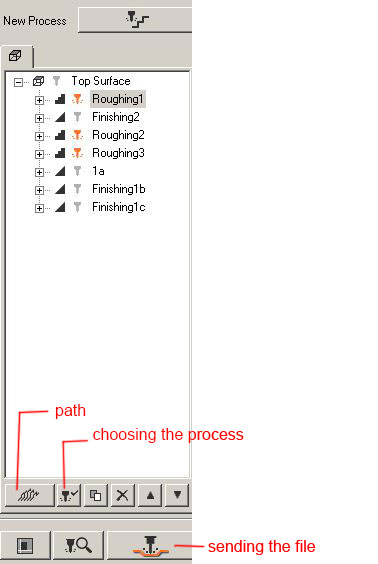Week12 - molding and casting //////
Assignment:
* Design a 3D mold, machine it, and cast parts from it.
As usual before starting the assignment we have
Ferdi's review, always very usefull for a deeper understanding of the assignment.
STEPS:
* creating a rigid positive mold in machinable wax
* create the negative mold in silicone
* cast the object from the silicone mold
DESIGN A 3D MOLD
For the 3d mold I thought in several options, but at the end I used a simple model just for learning the technique.
FIRST OP.
I wanted to do a model from a natural texture as a leaf inspired on Gaudi's tiles, so I have been playing with two programs in order to do the 3d model:
In shapeways for turning the 2d file into a 3d model but this program only export as a .x3db file so I used
netfabb for converting the .x3db to a stl file.

SECOND OP.
I made a 3d model in Solid Works for a flower pot, but I have decided doing this mold after having more experience with the casting.

THIRD AND FINAL OP.
I wanted to mill the first and third option but finally I made the mold for Le Corbusier's modulor as a present for my architects friends in Uruguay or I could sell it at Le Corbusier's buildings :). So I made the 3d model in Rhino.


For making the mold I took this precautions:
* Measure the wax block that you are going to use, in my case I shared the block wax with Kat, our block was 44 mm thick.

* The other dimension that you have to keep into account is the dimension of the tool that you are going to use. In our case we use the 1/8 drill bit (3.175mm / 0.125"), and the distance between the bottom of the drill bit and the modela drill bit holder.


* For the finishing we use the 1/32 drill bit (0.7938mm / 0.03125"), which is straight for the first 3 mm and has an inclination after that point, it is unable to mill straight walls higher than 3 mm. For this reason I made the model of a 2.8mm hight.

* Leave around 5mm between the top of the object and the top of the wax block, I left 10mm.

MODELA PLAYER 4 AND MILLING
STEPS FOR THE MODELA PLAYER:
* select the machine in File> Select machine (SRM-20)
* set the dimensions of the model

* set the origin to the top left front corner of the model

* set depth for safety

* Generate the G-code for 2 processes:
- Roughing with a 1/8 (3.175mm) tool
- finishing with 1/32 (0.79mm) tool

* select the tool

* select the material (Modeling Wax)
We used this values for the Roughing:
XY speed:24 / z speed 15 / Spindle:6500-7000 / Cutting-in amount:1.5

* set the cutting area


* set finishing:






Set up the machine:
* set the new xy coordinates and z coordinates
Send the G-code to the machine.

CREATE THE NEGATIVE MOLD IN SILICONE
STEPS:
* For calculating the volume of silicone we used a plastic cup with water taken from the molds and measured the volume, calculate 10% more to be sure.

* For making the mold:
Gloves / Kitchen paper / chopsticks for mixing the materials / 1 big cup that we cut for make it fit in the vacuum chamber / Ferdis's vacuum
* Material:
Part A :100 / Part B :5, in our case was 141g but we rounded until 200g so we put 200g Part A / 10g Part B.
It starts hardening after 30 minutes from opening and it needs 24hs to cure at room temperature (around 23 C).
* We mixed the material like 20 min before putting it into the vacuum.

* Vacuum the full cup until you get ridd of most of the bubbles. We made this step like 3 o 4 times.

* Then put some of the material in the wax mold (fast!) to create a thin layer.

* We vacuumed the thin layer, then added the rest of the material and vacuumed again trying to get ridd of all bubbles.



CASTING
I made the first casting with marble:
Mixing ratio: 100g of marbelcast to 25g of water


The material was really nice but the mold was too thin and it broke.
Then I tried with liquid plastic (Smooth-On)
* Ratio: 100 / 90
* Can be sanded, primed and painted
* Quick cure time

Result: The material was too dense for mold's thickness, in the future I would like to try with another material maybe metal.

Download files
home


































